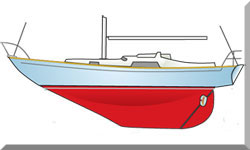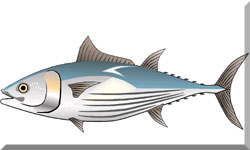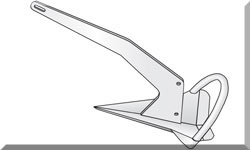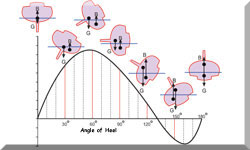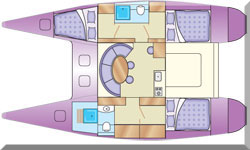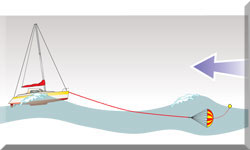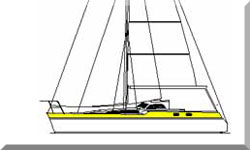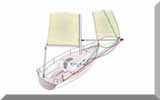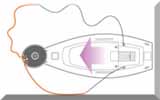- Home
- Mason Sailboats
Mason Sailboats: Crafting Blue Water Dreams
There's just something about the name Mason that resonates with serious sailors. If you've ever dreamt of pushing beyond the horizon, of truly living aboard for weeks or months at a stretch, then these yachts likely already have a special place in your thoughts.

Table of Contents
They're not about chasing the latest trend or winning races by a hair's breadth. Instead, Mason sailboats, especially those born from the partnership between Pacific Asian Enterprise (PAE) and the legendary designer Al Mason, carved out a reputation for themselves – a solid, respected niche. They're the kind of boats you trust: capable, comfortable, and beautiful in a way that truly endures. Built for the long haul, every single one.
The Spark: How Mason Sailboats Came to Be
The story of Mason sailboats is actually pretty intertwined with Pacific Asian Enterprise (PAE), a company that many folks now know best for their incredibly robust Nordhavn power vessels. But back in the mid-1970s, PAE decided to try their hand at sailboats. What they wanted was simple: a naval architect whose designs weren't just pretty, but genuinely rugged and seaworthy. Al Mason, fresh from his formative years with the highly regarded John Alden, was the natural fit. His design heritage just clicked with PAE's big vision for truly exceptional blue water cruising sailboats.
Their journey together started with the Mason 43. This boat, I'd argue, set the whole tone for the series. For the actual building, PAE chose Ta Shing Yacht Building in Taiwan. Ta Shing, founded in '76, had a simple, almost audacious goal: "to be the best." You know, that commitment to quality? It paired perfectly with Al Mason's designs.
The Mason 43 was an instant hit, and that kicked off a really productive period of sailboat building, stretching from 1978 right up to 1997. It’s a bit of a shame, but PAE eventually shifted entirely to power vessels in the early 2000s, and sadly, the original Mason sailboat molds were destroyed. Yet, if you look around any major cruising ground today, you'll still see hundreds of these Masons out there, bravely plying the world's oceans. It’s a testament to their original design and build quality, for sure. Many of these used Mason sailboats are still active, still going strong, vividly illustrating their timeless, ocean-crossing durability.
Al Mason's Touch: Designing for the Open Sea
Al Mason's design philosophy for these Mason sailboats was always about crafting vessels that were more than just good-looking. They had to be inherently seaworthy and genuinely comfortable, especially for those longer stretches out at sea. You'll notice his Al Mason designs often feature generous freeboard, nicely balanced overhangs, and that low-profile coachroof – all hallmarks of that classic, enduring appeal. And below the waterline? Typically, you'll find Mason yachts sporting a full keel, usually with a moderate forefoot and a rudder mounted directly on the keel, set well aft. This isn't by accident; it's a signature of proper blue water design, giving you fantastic directional stability, a much more comfortable ride in a choppy sea, and a good bit of protection for the rudder itself.
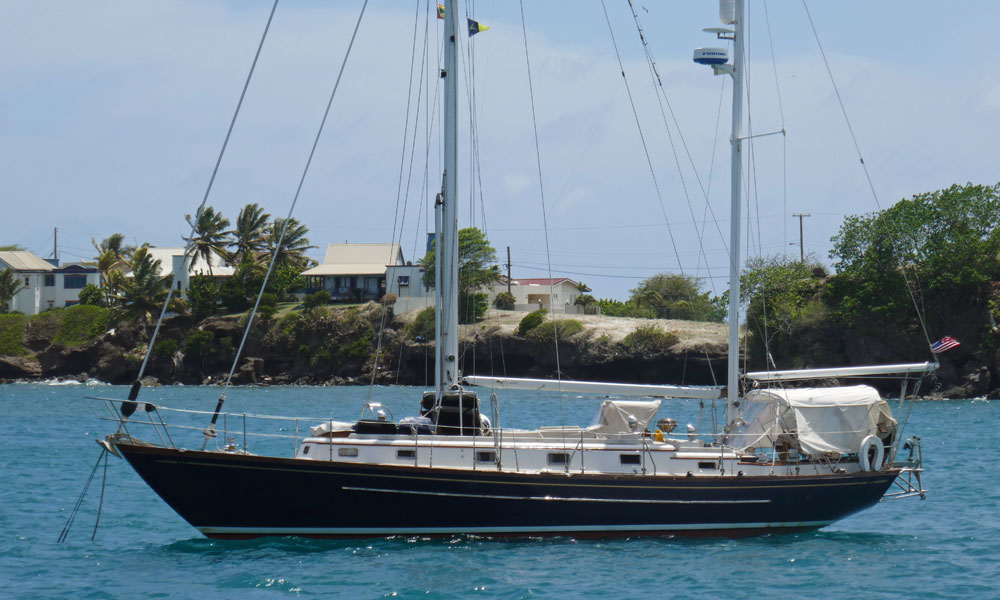 Mason 43
Mason 43While many core design elements stayed consistent across the whole Mason sailboat line, a few models really hit it big. The Mason 43, as I mentioned, was the foundational one, quickly putting the brand on the map. Its success naturally led to the development of other "3" series boats, including the Mason 53, Mason 53cc, Mason 63 and even a smaller M33. Then, around the mid-1980s, PAE revisited these designs, giving us the "4" series: the Mason 34, 44, 54, and 64. Often, these newer versions shared the same proven hulls but featured updated deck layouts and interiors to match the evolving preferences of cruisers.
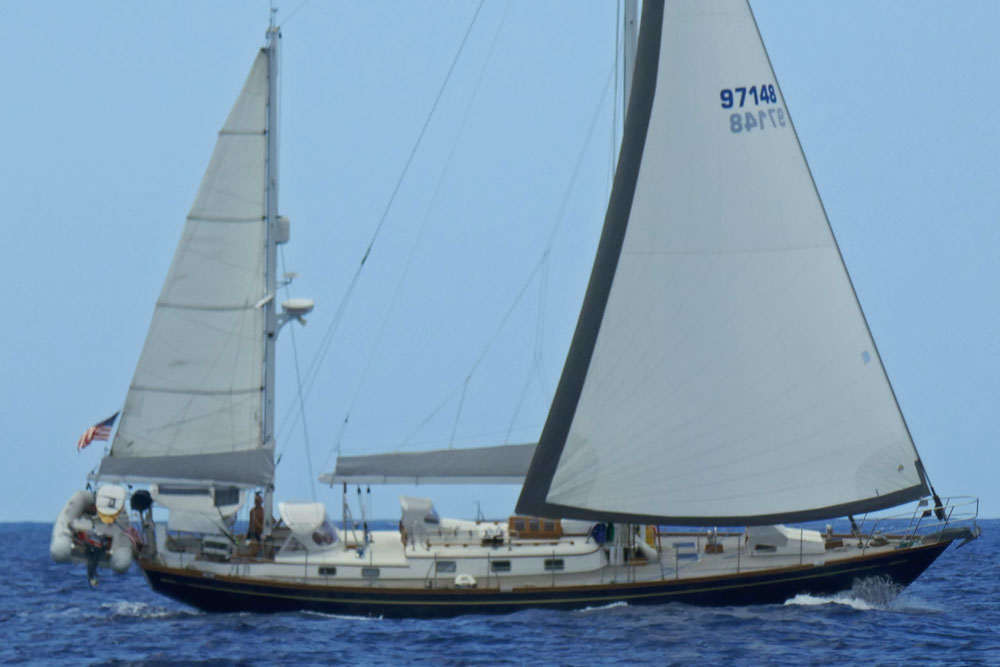 Mason 53
Mason 53Take the Mason 44, for example. Built on the same hull as the Mason 43, it still managed to incorporate several smart improvements. Things like a tweaked rudder, a raised sole that allowed for more fuel tankage, and often, a new aft companionway. What really stands out on some Mason 44 models, though, was the shift from traditional teak decks to a fiberglass deck with a deep, diamond-pattern non-skid. The aim was simple: reduce maintenance, but keep that classic yacht aesthetic firmly in place. And the Mason 54? Now that's a boat particularly celebrated for its formidable blue water capability. Its functional hull form means you can stash away a serious amount of supplies, fuel, and water – absolutely critical for those extended ocean crossings – while still getting surprisingly respectable sailing performance.
Solid as a Rock: Mason Sailboat Construction & Quality
The stellar reputation Mason sailboats have for durability and longevity isn't just talk; it comes directly from their robust construction methods and careful choice of materials. Hulls and decks were primarily crafted from solid fiberglass. Ta Shing Yacht Building, their main builder, was simply known for its meticulous approach. On the Mason 43, for instance, you'd find a solid fiberglass hull, reinforced with carefully integrated stringers for stiffness. The bulkheads, often beautiful mahogany marine ply, were bonded securely to the hull, using foam filler to add strength without creating any unwanted hard spots.
Here’s a neat detail: some Mason sailboat models, like the 43 and 44, featured balsa-core sandwich construction for the deck. They'd lay balsa bricks, then vacuum the entire molding and soak it in resin before laminating the fiberglass layers. This technique was specifically designed to minimize the risk of core saturation down the line. The focus, always, was on building a strong, cohesive structure, one truly designed to stand up to the rigors of offshore sailing. You'll often hear owners singing praises about the "highest standard" of construction – it's why so many Mason sailboats from the 1980s are still sailing actively today, decades later.
Under Sail & Living Aboard: The Mason Experience
When you get a Mason sailboat out on the water, you're not generally looking for blistering speed. That's not their game. What they deliver is stability and predictability. Their full keel designs mean fantastic tracking – they hold a course beautifully – and a remarkably comfortable motion even when the seas kick up. For long-distance cruising, where stability and comfort usually win out over sheer pace, they're pretty much ideal. You won't typically spot them on the racing circuit, but their ability to simply eat up various sea conditions with ease? That's a consistent point of pride among owners. Later models, like the Mason 44, even saw improved stability and sailing performance with redesigned rudders and full-width mainsheet travelers, especially when the wind really piped up.
Step below deck on a Mason sailboat, and you're greeted by a classic, traditional aesthetic. Think rich wood joinery, often teak, giving off that warm, timeless yacht feel. The interior layout is all about practicality and making extended living aboard genuinely comfortable. Cabins typically offer excellent ventilation, with plenty of opening hatches, ports, and those distinctive dorade vents.
Storage? Oh, it's abundant, with louvered lockers, handy drawers, and cedar-lined hanging lockers. Galleys are cleverly designed to be functional even at sea, usually featuring ample cold storage and layouts that just make sense. Headroom is generally generous too, which really makes a difference to the overall liveability. This emphasis on solid, well-crafted finishes and thoughtful storage really underscores their blue water cruising purpose, where comfort and functionality simply have to reign supreme.
Your Next Chapter: Buying a Pre-Owned Mason Sailboat
Since Mason sailboats are no longer actively produced, anyone looking to own one will, naturally, be exploring the pre-owned market. Good news, though: their reputation for quality generally means they hold their value pretty well. Still, as with any older vessel, getting a thorough survey is absolutely critical. While those solid fiberglass hulls are mercifully less prone to certain issues, deck core saturation can sometimes be a concern on older balsa-cored decks, especially if through-deck fittings haven't been meticulously maintained or water has found its way in over the years. Of course, electrical systems and engine components, simply due to age, will always need a good, diligent inspection too.
You know, common criticisms are actually quite rare. That said, some older models might have electronics that feel a bit dated now, and you might want to factor in modern upgrades. And yes, their heavier displacement, which is a big part of their seaworthiness, can mean they're a bit slower in very light winds compared to some of the newer, lighter designs out there. But here's the kicker: the Mason sailboat owners association and the wider community are incredibly vibrant and active. You'll find dedicated owner groups and online forums that are just invaluable for advice, sourcing parts, and sharing experiences. This strong community really adds to the appeal and support for these classic cruisers.
More Than Just a Boat: An Enduring Icon
The Mason series of sailboats, truly a brilliant partnership between Al Mason's thoughtful design and Ta Shing's dedicated craftsmanship, have unquestionably cemented their legacy. They are highly capable, deeply beloved blue water cruising yachts. They embody a philosophy that goes beyond mere boat building; they craft homes and reliable partners for those who genuinely dream of distant horizons. Their ongoing presence in cruising grounds all over the world, decades after they first launched, speaks volumes about their timeless design, rugged construction, and their unwavering suitability for any adventurous sailor. For anyone truly seeking a proven, comfortable, and aesthetically pleasing yacht for serious cruising, a Mason sailboat remains, without a doubt, a compelling choice.
Resources & References
- https://mason-sailboats.org/
- https://nordhavn.com/nordhavn-yacht-models/retired-models/mason-sailboats/
- https://sailboatdata.com/sailboat/mason-33/
- https://mason-sailboats.org/wp-content/uploads/2018/03/Mason-54-Sail-Review.pdf
- http://www.mason44.com/Linked-Files/M44-Details-Manual-Searchable.pdf
- https://sailboatlab.com/data_sheet/4548/0/
- https://mason-sailboats.org/wp-content/uploads/2018/03/Mason44_OwnerManual.pdf
- https://mason-sailboats.org/links/
- https://www.nautipedia.it/index.php/P.A.E._%26_NORDHAVN_HISTORY
Recent Articles
-
Planning Your Sailboat Liveaboard Lifestyle: An Ocean Sailor's Guide
Dec 06, 25 05:18 AM
Seasoned sailors share their methodical risk analysis for planning a secure Sailboat Liveaboard Lifestyle, covering financial, property, and relationship risks. -
Marine Cabin Heaters: The Expert’s Guide to Comfort & Safety at Sea
Dec 05, 25 06:52 AM
Choose the best Marine Cabin Heaters for your vessel. Expert advice on diesel, paraffin, and hot water systems for year-round cruising comfort. -
Marine Water Heating Systems: Free Hot Water from Your Boat's Engine
Dec 03, 25 05:06 PM
Tap into your engine's heat to get free hot water on board. An experienced ocean sailor's guide to marine water heating systems, calorifiers & safety.


